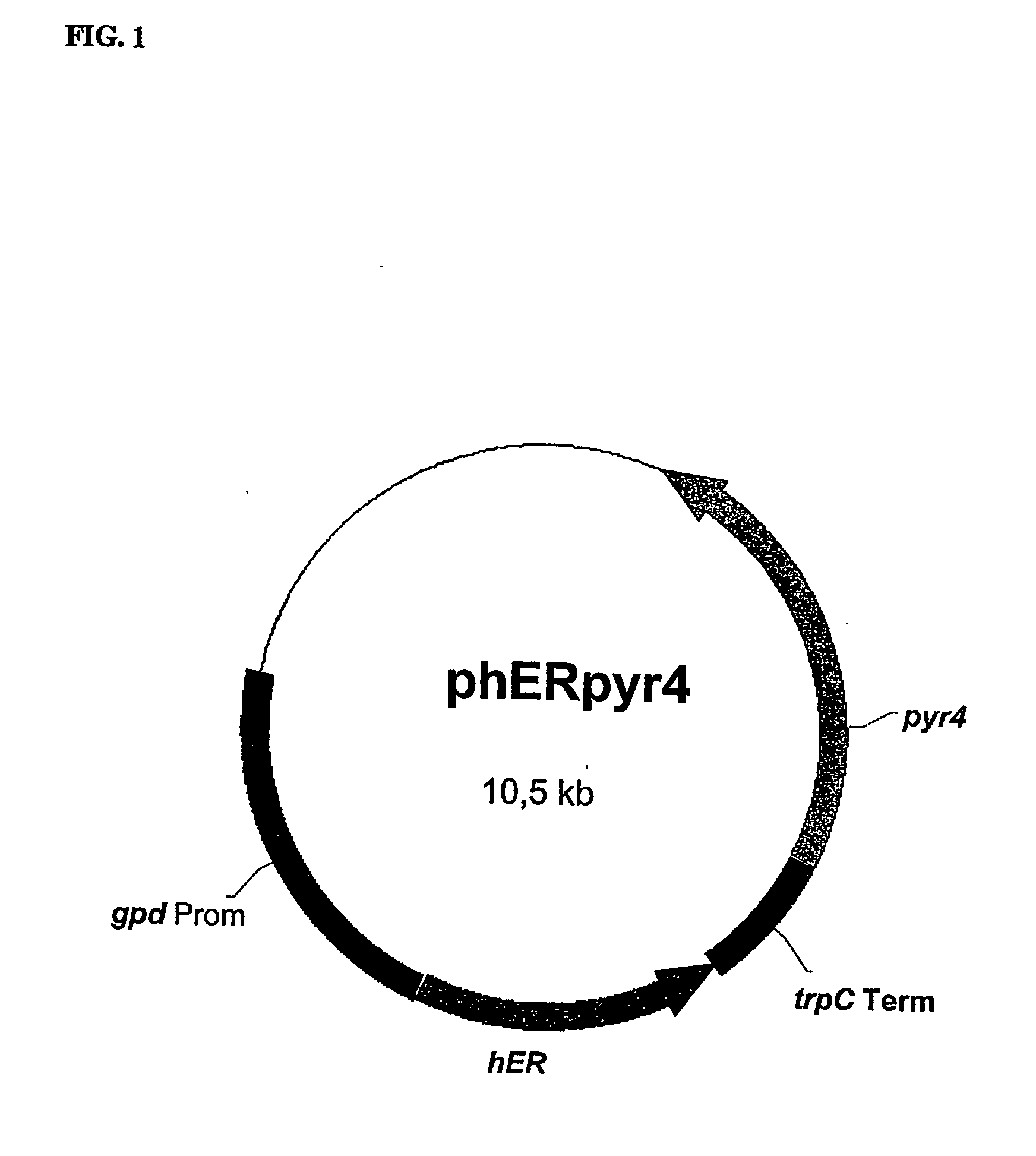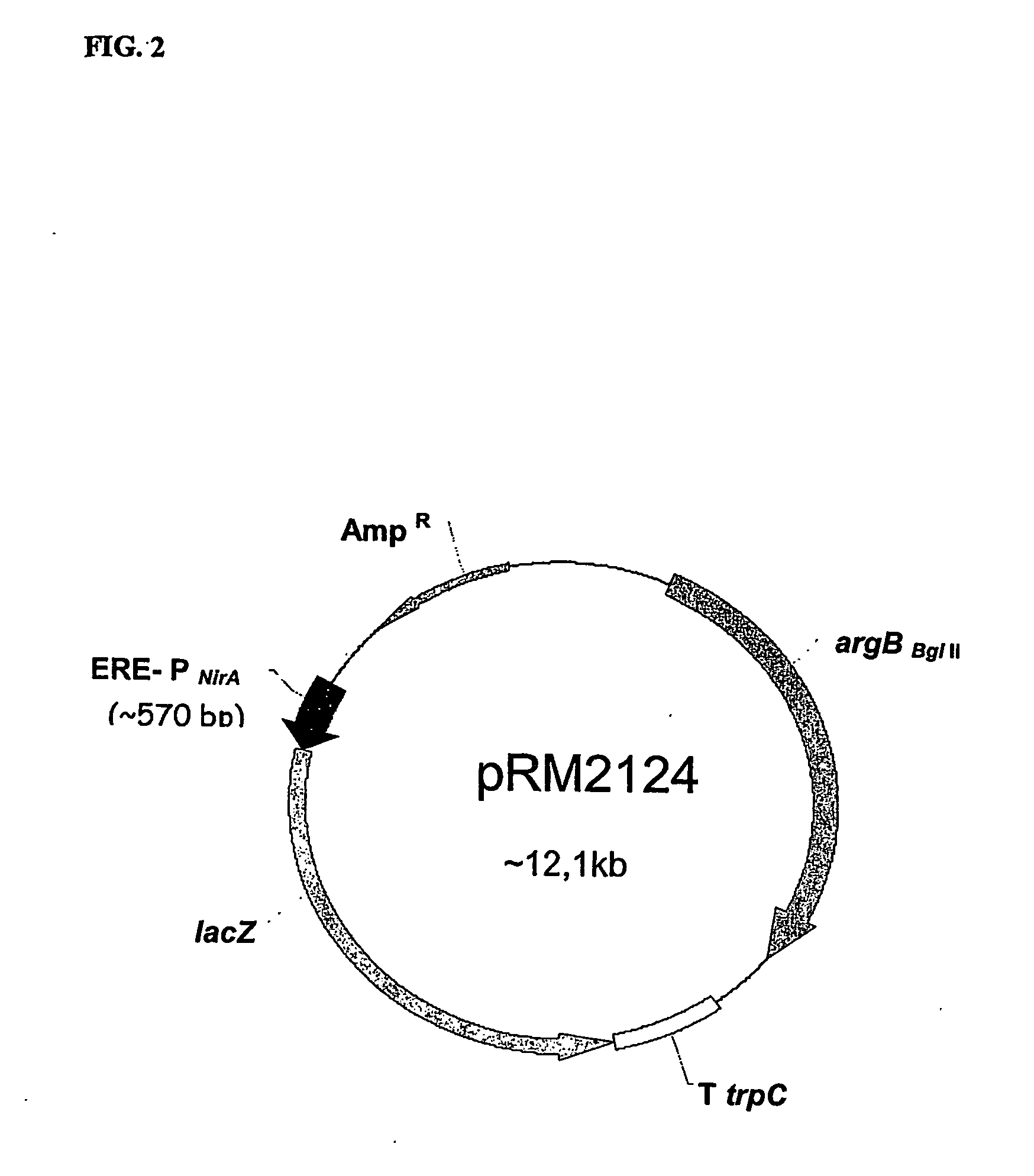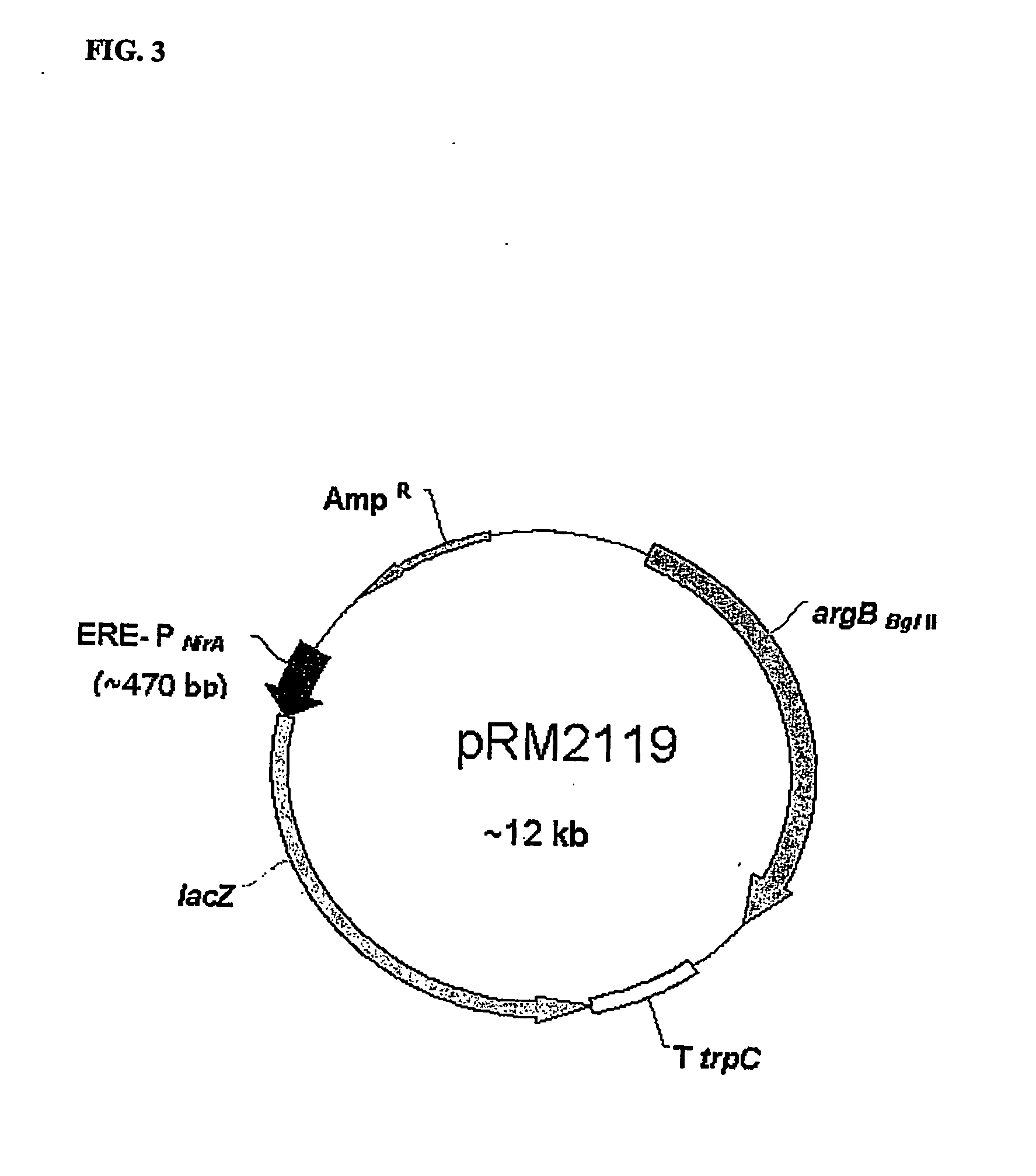Steroid receptor modulation of gene expression
a gene expression and steroid receptor technology, applied in the field of gene expression modulation or regulation, can solve the problems of undesired pleiotropic effects, insufficient core promoter regions to provide full promoter activity, and additional burden on the host cell, and achieves the effect of high efficiency, easy antagonization or withdrawal from the medium
- Summary
- Abstract
- Description
- Claims
- Application Information
AI Technical Summary
Benefits of technology
Problems solved by technology
Method used
Image
Examples
example 1
Nucleic Acid Constructs and Transformation of Strain
[0070] The following is a general strategy for constructing plasmids to be used for the transformation of the strain of interest.
Construction of Plasmid phERpyr4 (FIG. 1)
[0071] A 1.8 kb EcoRI fragment, containing the hER, of the plasmid Yep90-HEGO (Pierrat et al., 1992) was cloned into the NcoI site of a Pgpd-Ttrpc construct (originated from pAN52-1) into a pBKSII+ backbone (Stratagene, La Jolla, Calif., USA) harbors the constitutive promoter gpdA, from Aspergillus nidulans (Acc. Z32524), which drives expression of the human estrogen receptor 1 (Acc. NM 000125). Termination sequences harbor the trpC terminator from Aspergillus nidulans (Acc X02390). The marker gene is a pyr4 (orotidine-5′-phosphate decarboxylase) from Trichoderma harzianum (Acc. U05192). The resulting Pgpd-hER-Ttrpc cassette was cloned as a SpeI / ClaI fragment into a plasmid that contains the pyr4 gene of Trichoderma reseei as a selection marker resulting in pla...
example 2
Culture Conditions
[0079]Aspergillus strains were grown for 12-14 hours at 37° C. at 180 rpm in minimal media (Pontecorvo et al. 1953) with appropriate supplements. To test the different inducer concentrations the strains were harvested by filtration and aliquots were transferred to fresh media containing the different inducer concentrations and additionally grown for 8 hours. At the end mycelium was harvested by filtration and frozen in liquid nitrogen. For time curve experiments the strains were harvested and additionally grown for 24 hours and after 2, 4, 6, 8 and 24 hours samples were taken and frozen in liquid nitrogen. FIG. 9 shows the expression levels of the reporter constructs after activation with inducers, either with ethanol (alc) or with DES (hER). An equal amount of fungal cell mass has been transferred to fresh medium and aliquots have been subjected to induction by the agonists. After sampling at desired time points the wet cell pellet has been processed as described...
example 3
[0080] NaPO4 buffer and glasbeads (0.75-1.0 mm) were added to the frozen mycelia and cells were destroyed by the use of the Hybaid RiboLyser. Cell debris was separated by centrifugation and the supernatant was used for enzyme assays Protein concentration was determined using the BCA assay of Pierce and the specific β-galactosidase activity was determined by the use of the protocol of Invitrogen. FIG. 10 shows a protein standard curve obtained with bovine serum albumin (BSA) (Table 1) under the reaction conditions used throughout the whole set of experiments. The determination of protein content of a given sample was carried out according to these standard conditions and specific enzymatic activity levels (units β-galactosidase) have been correlated to units per milligram protein (units per mg protein).
[0081] A calibration curve was plotted showing the relationship between the concentration of DES [μg / μl] and the protein concentration [units / mg]. The protein co...
PUM
| Property | Measurement | Unit |
|---|---|---|
| Molar density | aaaaa | aaaaa |
| Molar density | aaaaa | aaaaa |
| Molar density | aaaaa | aaaaa |
Abstract
Description
Claims
Application Information
 Login to View More
Login to View More - R&D
- Intellectual Property
- Life Sciences
- Materials
- Tech Scout
- Unparalleled Data Quality
- Higher Quality Content
- 60% Fewer Hallucinations
Browse by: Latest US Patents, China's latest patents, Technical Efficacy Thesaurus, Application Domain, Technology Topic, Popular Technical Reports.
© 2025 PatSnap. All rights reserved.Legal|Privacy policy|Modern Slavery Act Transparency Statement|Sitemap|About US| Contact US: help@patsnap.com



